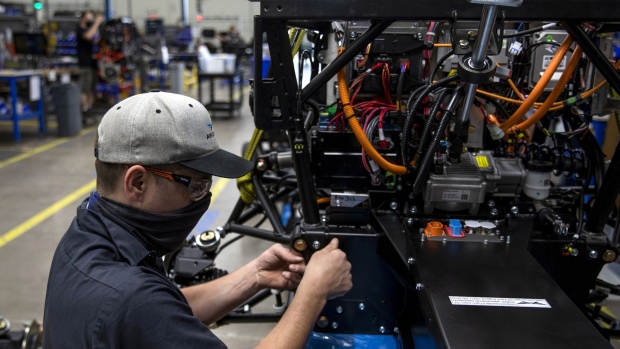May 14, 2021
U.S. manufacturing output increased in April for second month
, Bloomberg News

U.S. manufacturing output rose in April by slightly more than expected, suggesting further improvement for factories that are otherwise buffeted by supply shortages and shipping challenges.
Factory output increased by 0.4 per cent in April, following an upwardly revised 3.1 per cent jump in March, Federal Reserve data showed Friday. Total industrial production, which also includes mining and utility output, rose 0.7 per cent in April after a revised 2.4 per cent increase a month earlier.
The median estimate in a Bloomberg survey of economists called for a 0.3 per cent monthly increase in factory production and a 0.9 per cent gain in industrial production.
Production growth in recent months has been constrained by shipping backlogs, hiring challenges and a global shortage of semiconductors. Still, steady business investment, strong consumer demand supported by trillions of dollars in government aid and a reopening economy suggest output will remain firm in coming months.
The Fed’s report showed increased factory output of chemicals, petroleum, primary metals and electrical equipment. Manufacturing capacity utilization, a measure of plant use, climbed to 74.1 per cent, while total industrial capacity increased to 74.9 per cent.
Vehicle Production
Production of motor vehicles decreased 4.3 per cent last month compared with 3.8 per cent gain a month earlier. U.S. automakers have been hit hard by a global chip shortage, in some cases resulting in plant shutdowns and lower output. Excluding autos and parts, manufacturing rose 0.7 per cent after a 3.1 per cent surge.
Utility output rose 2.6 per cent in April as temperatures warmed, while mining output increased 0.7 per cent. Oil and gas well drilling accelerated to a 4.6 per cent gain from 3.1 per cent.
Total industrial production remains about 3 per cent below the pre-pandemic level in February of last year.
A separate report earlier this month from the Institute for Supply Management showed factory activity declined in April from a 37-year high as purchasing managers confronted limited availability of parts and materials.



